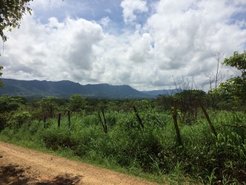Long-Term Resilient Foraging in Tropical Southern Mexico
A new study led by researchers from the Universidad Nacional Autónoma de México and the Max Planck Institute for the Science of Human History published now in Journal of Archaeological Science: Reports suggests the long-term utilisation of tropical forest-grassland ecotones in southern Mexico from the terminal Pleistocene to the Late Holocene by human populations. Stable carbon and oxygen isotope analysis were conducted on tooth enamel of small and medium-sized game excavated from the archaeological site of Santa Marta Cave (Chiapas, Mexico), which spans the terminal Pleistocene/Holocene boundary (~11,340–11,280 cal. years BP) until the Mesoamerican Classic period. The results demonstrate that there was a persistent mixture of tropical environments in the vicinity of the site, from canopy forest to grassland, throughout this period.

Hunting and gathering strategies adopted by the earliest humans in the Americas have been commonly associated with a "big-game hunting tradition". However, recent archaeological and palaeoecological data have highlighted far more complex foraging patterns by some of the first human societies in tropical North and Central America. The Santa Marta Cave represents an important, well-dated site for the detailed local analysis of past human diets in southern Mexico. Zooarchaeological and archaeobotanical evidence from Santa Marta already suggested that terminal Pleistocene societies relied on a variety of habitats for sustenance, from aquatic species from nearby freshwater streams to rich plant resources from the forests. "Our isotope results add to this picture by showing that the animals hunted by humans at the site were feeding in a range of environments, from open-woodland mosaic to closed forest environments, with limited change occurring during the period of site occupation" says Dr. Óscar R. Solís Torres, lead author of the study.
The team found that the ecotonal tropical forest and grassland environments of this region continued to provide a productive setting for the expanding and increasingly varied human societies. "Subsistence strategies adopted by the occupants of the Santa Marta Cave from their first arrival to the region implied the development of a particular technology for the exploitation of tropical environments, as well as the experimentation with plants that would later become important crops", continues Solís-Torres. This is one of the first isotopic palaeoecological records for an archaeological site spanning from late Pleistocene to Postclassic period from Central and southern North America and provides new, well-dated insights into changes in past habitats exploited by humans over this span of considerable potential climatic and cultural diversity. More records are needed from different locales, however, to truly assess the degree to which Pleistocene foragers in southern Mexico sought out these tropical settings.
